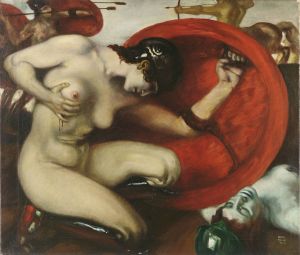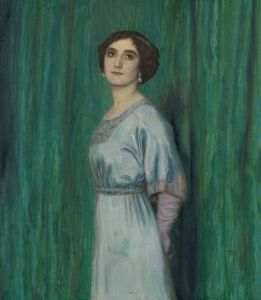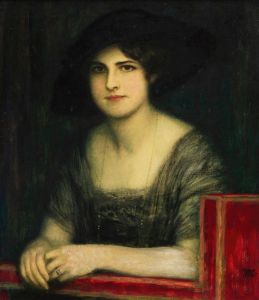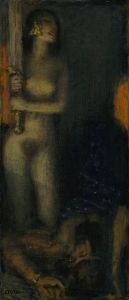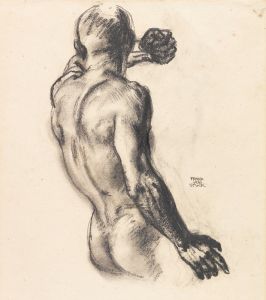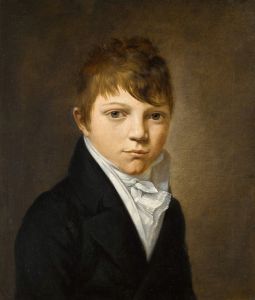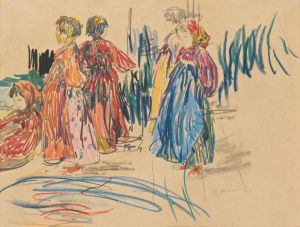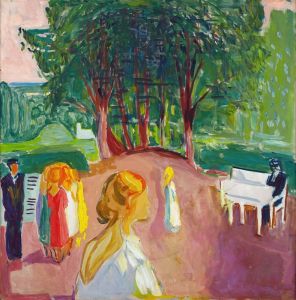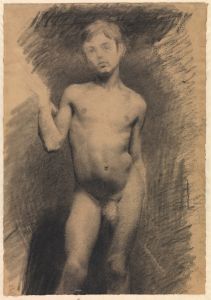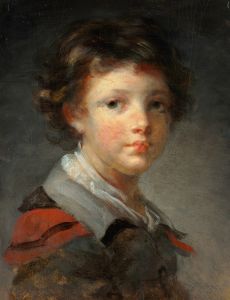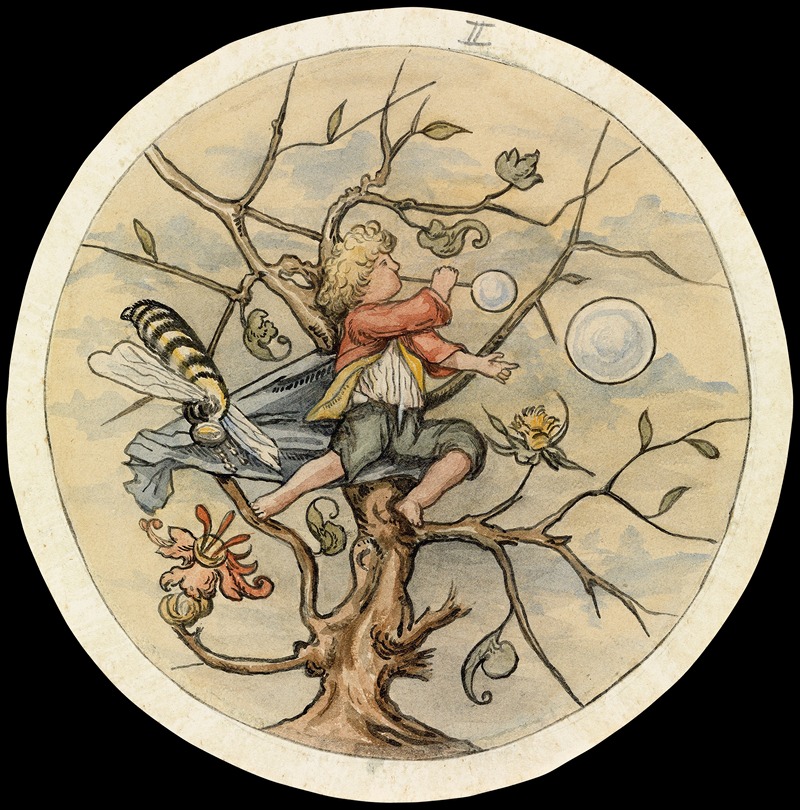
Seifenblasender Knabe
A hand-painted replica of Franz von Stuck’s masterpiece Seifenblasender Knabe, meticulously crafted by professional artists to capture the true essence of the original. Each piece is created with museum-quality canvas and rare mineral pigments, carefully painted by experienced artists with delicate brushstrokes and rich, layered colors to perfectly recreate the texture of the original artwork. Unlike machine-printed reproductions, this hand-painted version brings the painting to life, infused with the artist’s emotions and skill in every stroke. Whether for personal collection or home decoration, it instantly elevates the artistic atmosphere of any space.
Franz von Stuck was a prominent German painter, sculptor, and printmaker, known for his contribution to the Symbolist movement in the late 19th and early 20th centuries. One of his notable works is "Seifenblasender Knabe," which translates to "Boy Blowing Bubbles." This painting exemplifies Stuck's fascination with themes of innocence and the ephemeral nature of life, common motifs in Symbolist art.
"Seifenblasender Knabe" depicts a young boy engrossed in the simple yet captivating act of blowing soap bubbles. The painting captures a moment of childhood innocence and wonder, a theme that resonates with viewers due to its universal and timeless nature. The boy's expression is one of concentration and delight, reflecting the joy found in simple pleasures. The bubbles themselves are rendered with a delicate touch, showcasing Stuck's skill in capturing the play of light and color on their fragile surfaces.
Franz von Stuck was born on February 23, 1863, in Tettenweis, Bavaria. He showed an early talent for art and went on to study at the Munich Academy of Fine Arts. Stuck quickly gained recognition for his work, becoming a central figure in the Munich Secession, an art movement that sought to break away from traditional academic art and embrace more modern, avant-garde approaches. His work often explored mythological and allegorical themes, characterized by a distinctive use of color and dramatic compositions.
In "Seifenblasender Knabe," Stuck employs a soft, muted palette, which enhances the dreamlike quality of the scene. The background is kept simple, allowing the viewer to focus on the boy and the bubbles. This simplicity also serves to emphasize the transient nature of the bubbles, a metaphor for the fleeting moments of beauty and joy in life. The painting reflects Stuck's interest in capturing the essence of his subjects, going beyond mere representation to evoke an emotional response.
Stuck's work was highly regarded during his lifetime, and he received numerous accolades for his contributions to the art world. He was appointed a professor at the Munich Academy, where he influenced a generation of artists, including the young Wassily Kandinsky and Paul Klee. Stuck's legacy is evident in the continued appreciation of his work, which is housed in major collections and museums around the world.
"Seifenblasender Knabe" is a testament to Stuck's ability to convey complex themes through simple, yet powerful imagery. The painting invites viewers to reflect on the innocence of childhood and the transient nature of life, themes that remain relevant across cultures and generations. Through his masterful technique and symbolic approach, Franz von Stuck has left an indelible mark on the art world, and "Seifenblasender Knabe" remains a cherished example of his artistic vision.





